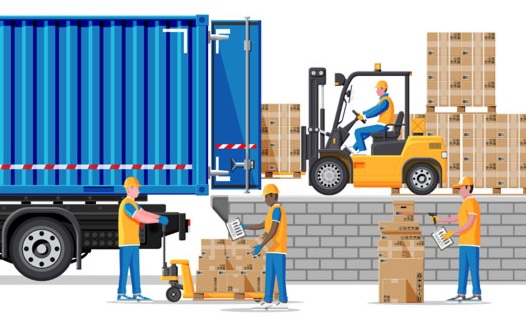
Heavy machinery is one of the most common causes of on-site injuries. While there are strict regulations about the use of forklift trucks and other dangerous vehicles, accidents still occur when not everyone is pursuing health and safety best practices.
Even when you are meeting all of your legal responsibilities as an employer or site manager, there may be extra steps you can take to make workers safer and cut the risk of accidents involving forklift trucks and other heavy vehicles. Below, we have listed ten things you can do to improve safety, from legal obligations through to best practice ideas that you can use for the protection of your workforce.
It is a legal requirement for businesses to provide training for any forklift operators that will be working on their site. Whether you train in-house, bring in external training providers or pay for drivers to take courses and earn qualifications, all forklift operators must meet the standards outlined in edition L117 of the Approved Code of Practice (ACOP).
Providing suitable PPE is one of the best ways to avoid and prevent accidents and injuries; it is also necessary in many cases for legal compliance with regulations. The type of PPE that will be necessary will depend on the specific risk factors you have identified, but will usually include high-visibility clothing and hard hats.
Carrying out thorough risk assessments is one of the most important duties of a business in maintaining high standards of health and safety. It is impossible to avoid or mitigate risks that you are unaware of, and you could be found liable for any accidents that happen on-site if it emerges that you have not carried out diligent risk assessments and put measures in place to keep forklift drivers and other workers safe.
In some cases, it will be possible to mitigate hazards through the provision of PPE and thorough health and safety training (including regular refreshers to keep everyone at the same level). However, some seemingly minor hazards can have an outsized impact on forklift trucks and must be dealt with accordingly. Uneven flooring, trucks that are not fitted with seatbelts, and insufficient space for trucks to operate in are all hazards that can be mitigated or removed,
Many of the most frequent accidents involving forklift trucks are caused by speeding, poor visibility due to loading, or drivers not taking enough care with observations. These problems can be avoided by taking care when operating a vehicle, but for a manager who wants to implement procedural improvements, traffic management is also key. If there is enough space, you should try to keep routes for pedestrians and vehicles separate with a floor marking system, or designate routes for forklifts to use and mark these clearly for the benefit of all workers.
Whether your site can accommodate separate pedestrian and vehicle traffic or not, safety signs placed at intersections can help to remind everyone to take care and make pedestrians aware of possible danger areas. Appropriate signage can also remind workers of their overall health and safety responsibilities and promote more responsible behaviours in high-risk work environments.
Safe loading does not only require that trucks not be overloaded or that goods are carefully secured - it also contributes to the driver’s visibility, and wherever possible goods should be loaded such that a forklift operator has the best possible view of the area in front of the vehicle.
Drivers should check their vehicle over prior to using it, and all vehicles in use should be checked at least once per day. This includes repositioning mirrors to give the driver the best possible view of their surroundings, testing brakes and adjusting the positions of the seat and the controls to ensure they are easily and comfortably accessible. If drivers swap vehicles, each driver should adjust their vehicle they use to their needs before piloting it.
As well as having each driver adjust the vehicle to their needs before they begin to use it, you should carry out regular safety inspections to ensure that forklift trucks remain in good working order. The law mandates that all lifting vehicles must be thoroughly examined at “suitable intervals” - at least once a year - and this must include inspection of lifting parts, such as the mast, chains, carriage, forks and tilt mechanism.
The British Safety Council estimates that each year, around 1,300 UK employees are hospitalised by forklift truck accidents, and some 25% of workplace transport injuries involve forklifts. It is important to be aware of how prevalent these types of accidents are, and the serious consequences they can have for workers and businesses.
By following these guidelines and working proactively to mitigate risks, site managers can avoid accidents and injuries. While they may be unlikely in many cases, treating forklift truck accidents as though they are impossible can make them much more likely to happen, so it is important to take as many steps as possible to keep everyone safe.